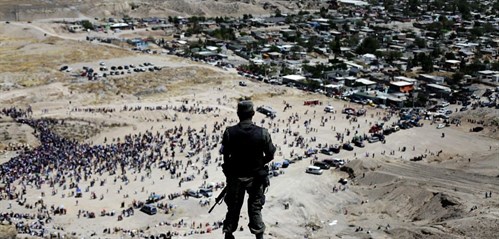Mexico's war on drugs: what has it achieved and how is the US involved?
Felipe Calderón launched the war after being elected in 2006, and since then the US has donated at least $1.5bn – but the biggest costs have been human.
11 Dec 2016On 10 December 2006, the newly inaugurated president, Felipe Calderón, launched Mexico’s war on drugs by sending 6,500 troops into his home state of Michoaćan, where rival cartels were engaged in tit-for-tat massacres as they battled over lucrative territory. The surge in violence had started in 2005, and a string of police and military operations by his predecessor Vicente Fox had failed to stem the bloodshed.
Calderón declared war eight days after taking power – a move widely seen as an attempt to boost his own legitimacy after a bitterly contested election victory. Within two months, around 20,000 troops were involved in operations across the country which initially attracted widespread support from communities tired of gun battles, gruesome execution-style murders and corrupt police.

The US has donated at least $1.5bn through the Merida Initiative since 2008 (another $1bn has been agreed by Congress – PDF), while Mexico has spent at least $54bn on security and defence since 2007. Critics say that this influx of cash has helped create an opaque security industry open to corruption at every level.
But the biggest costs have been human: since 2007, almost 200,000 people have been murdered and more than 28,000 reported as disappeared. In September 2014, 43 trainee teachers disappeared and are presumed to have been killed after they were attacked by corrupt police officers and handed over to drug gang members. The case – in which the Mexican army as well as corrupt politicians were implicated – has become emblematic of the violence perpetrated in heavily militarized zones.
Click here to read the full article
If you have any comments please tweet us @idhdp or visit our facebook page
Doctors can lead the way to healthier drug policies – join IDHDP now
Share this on:
